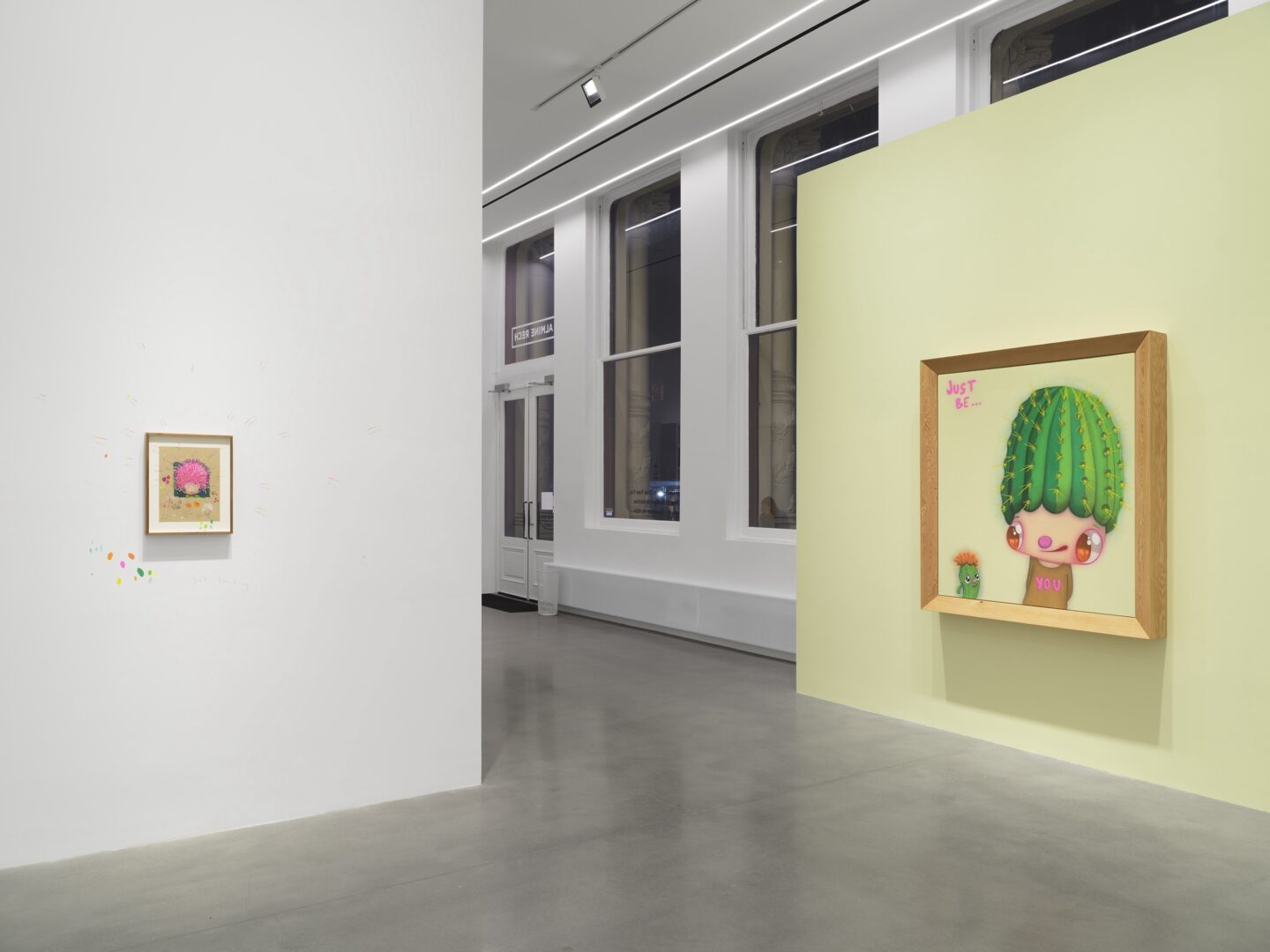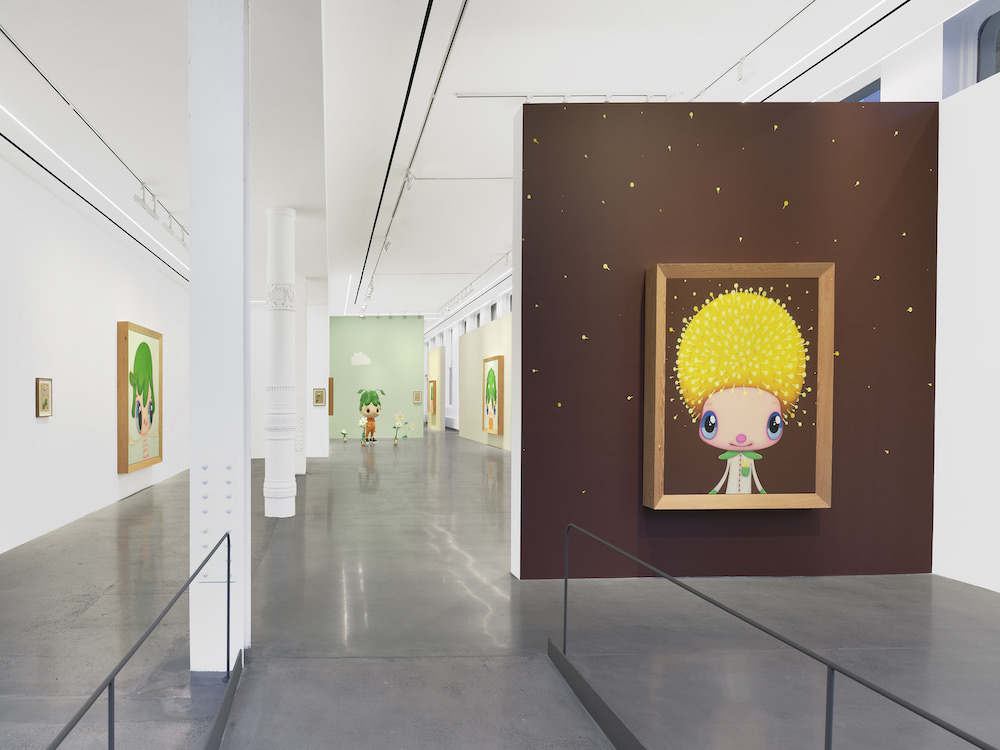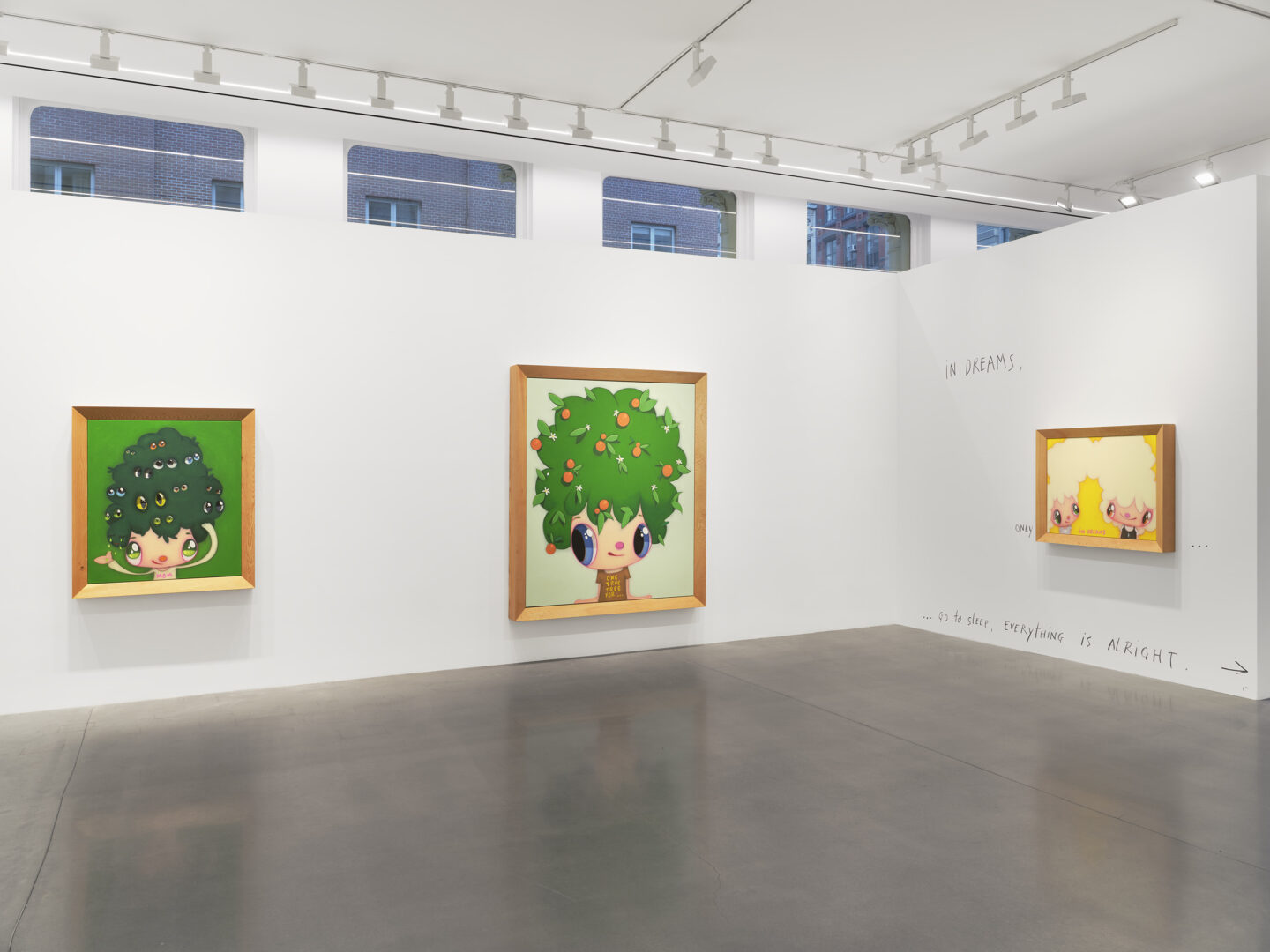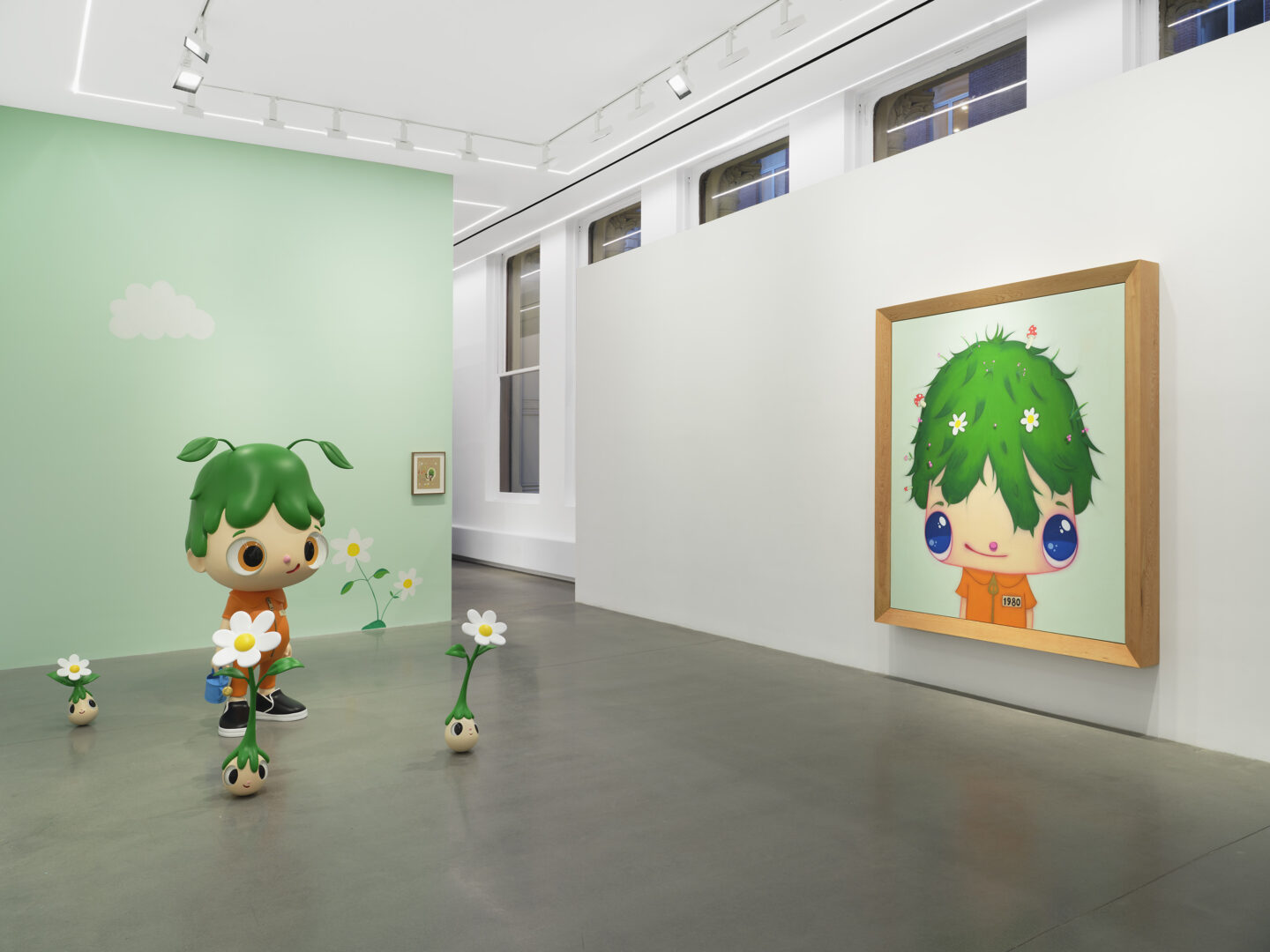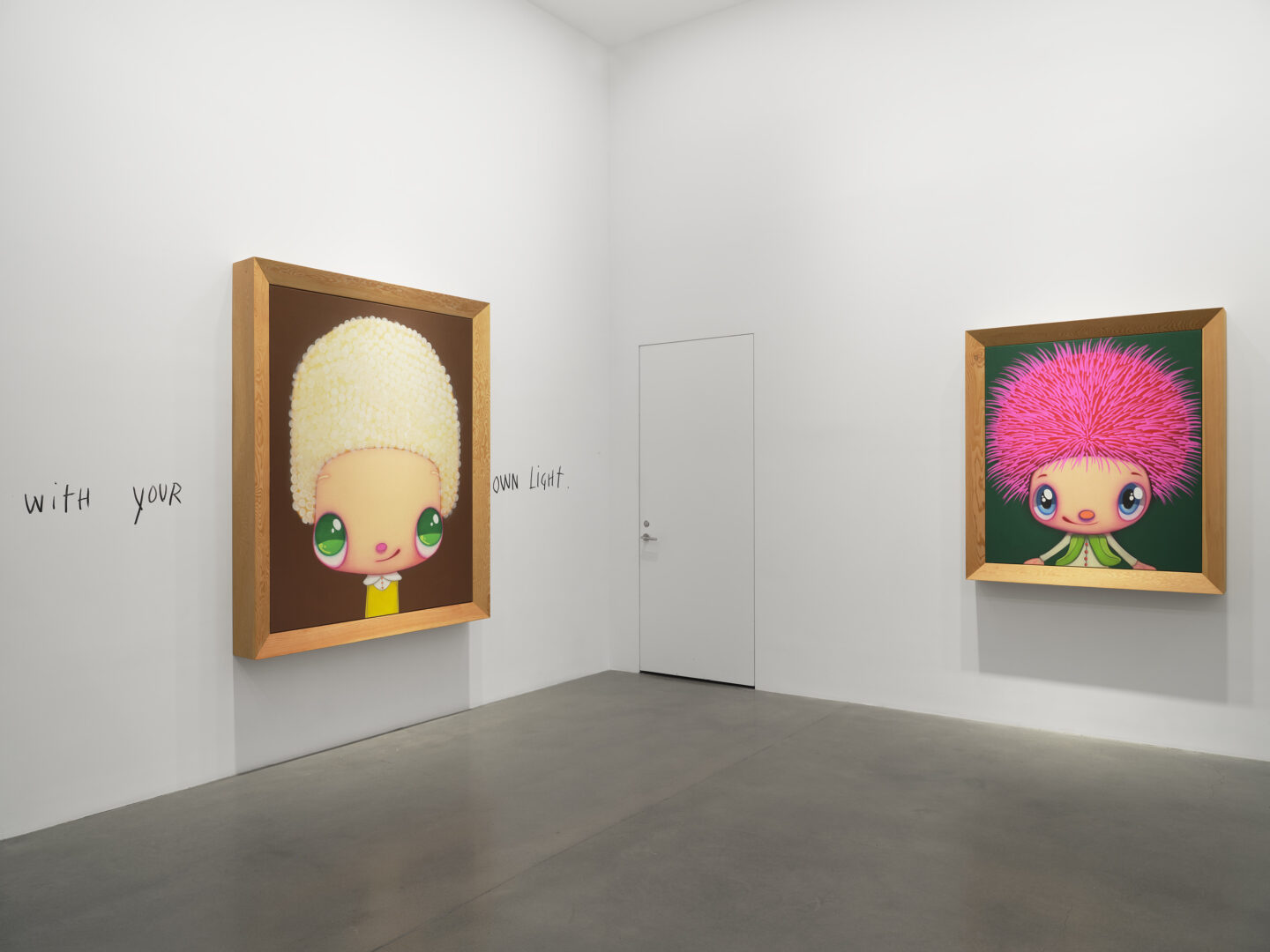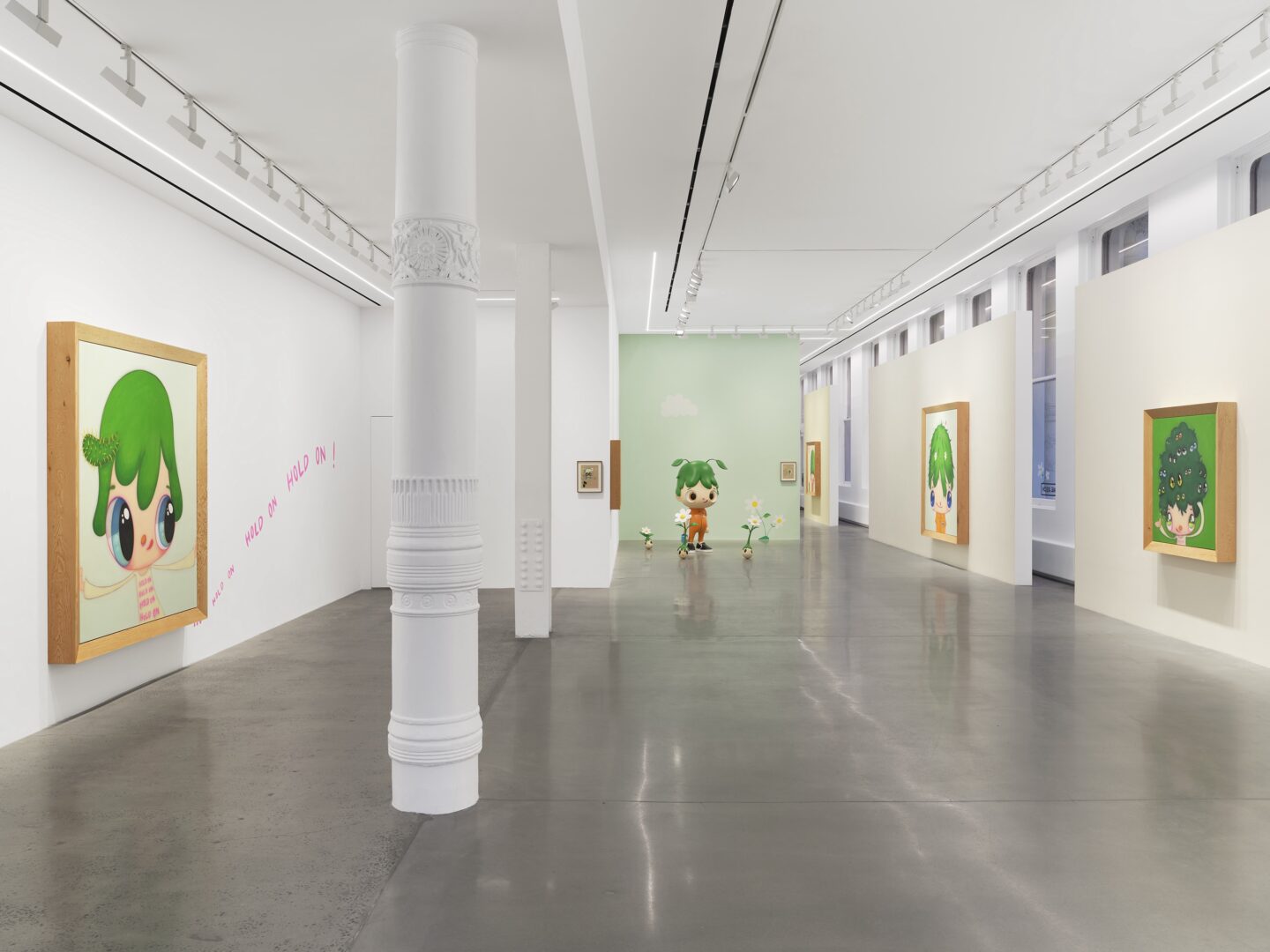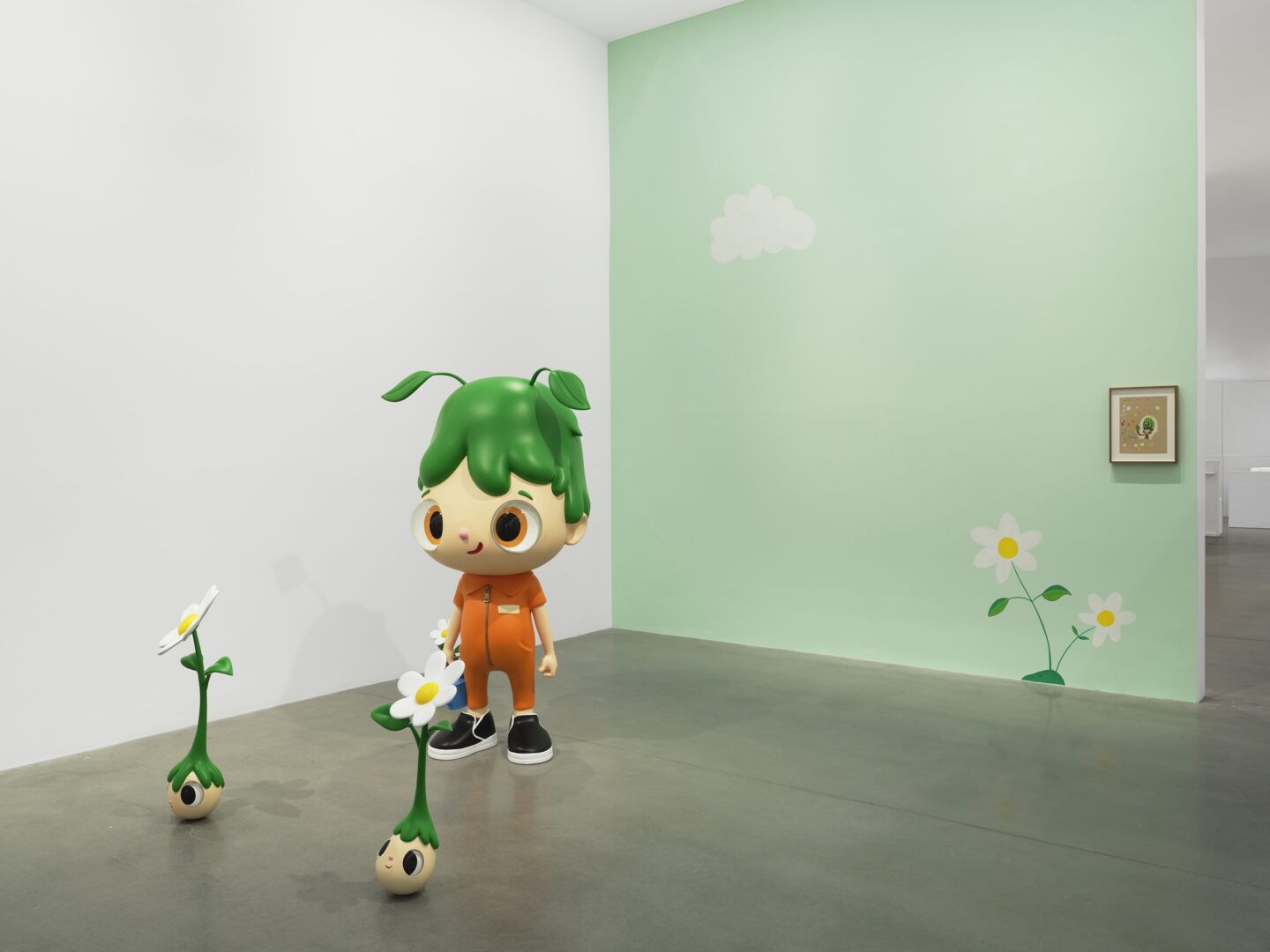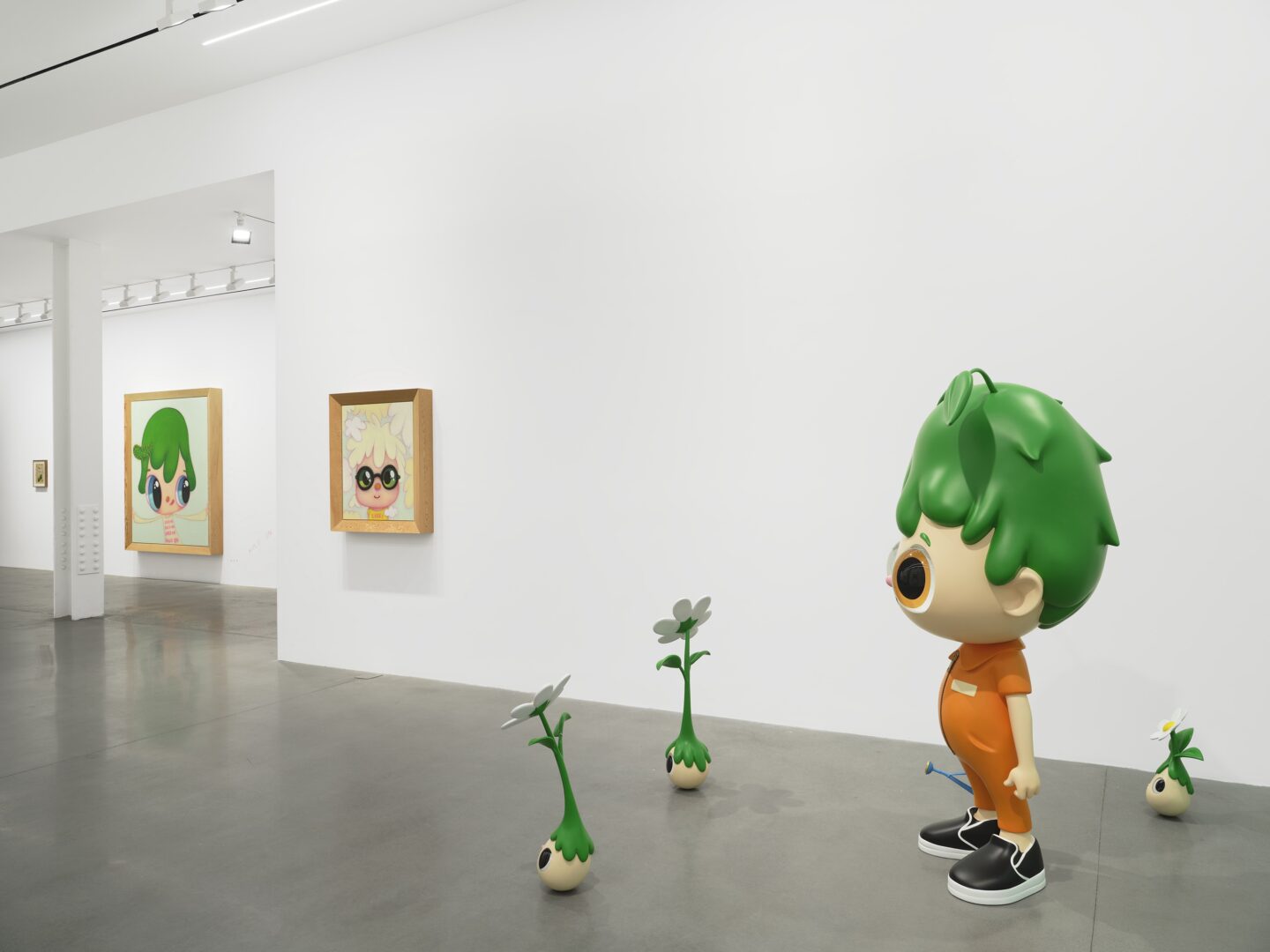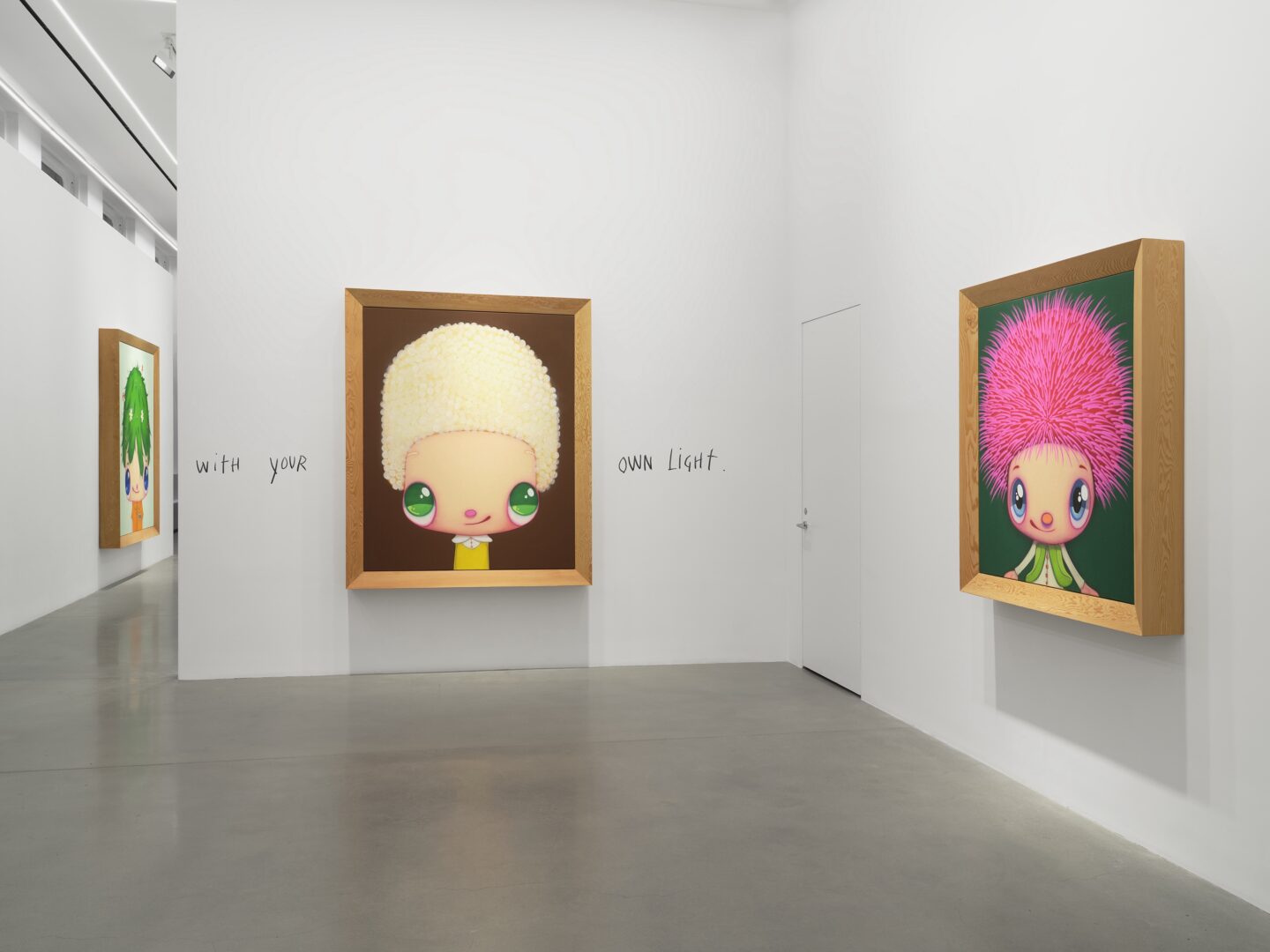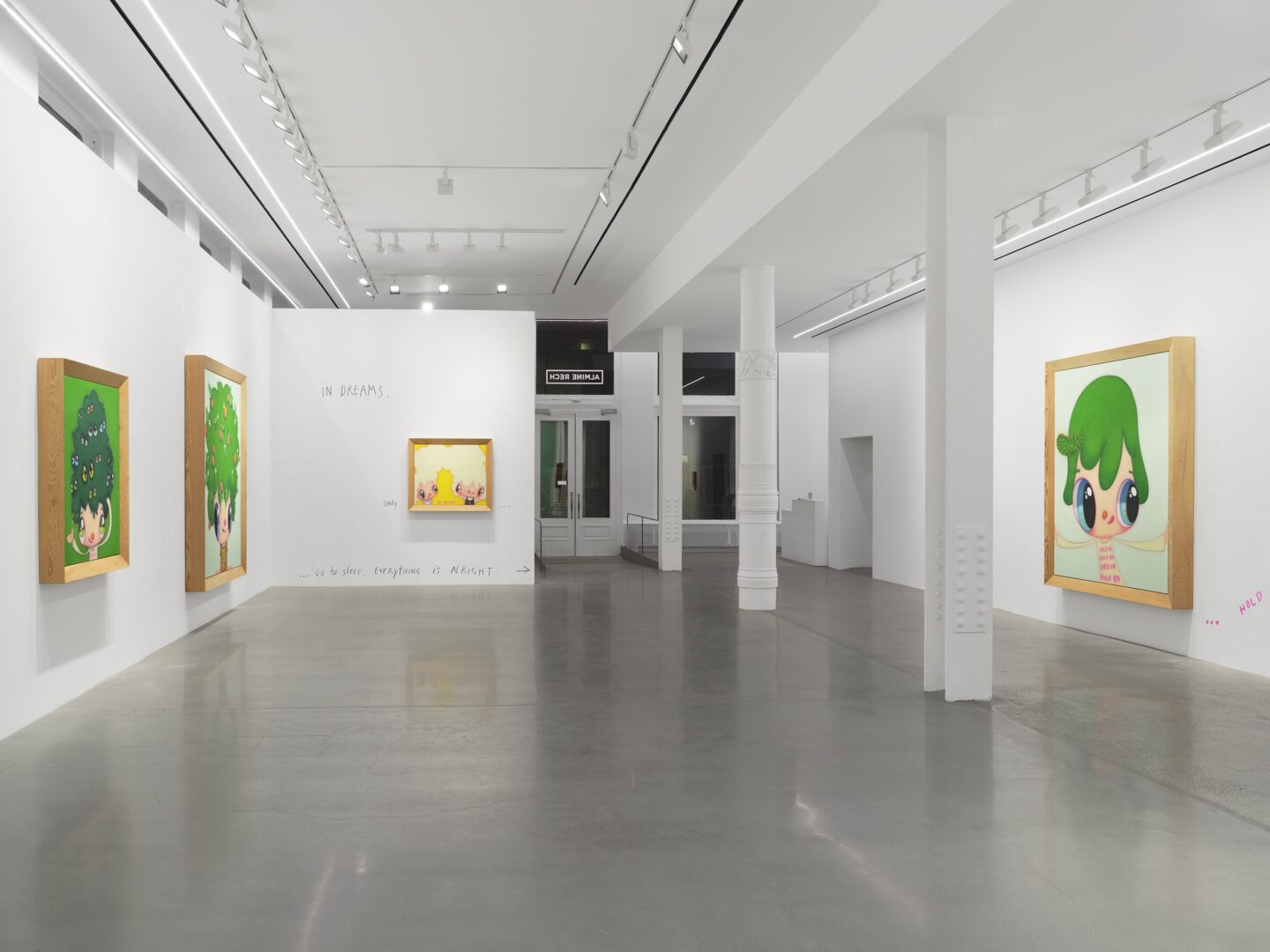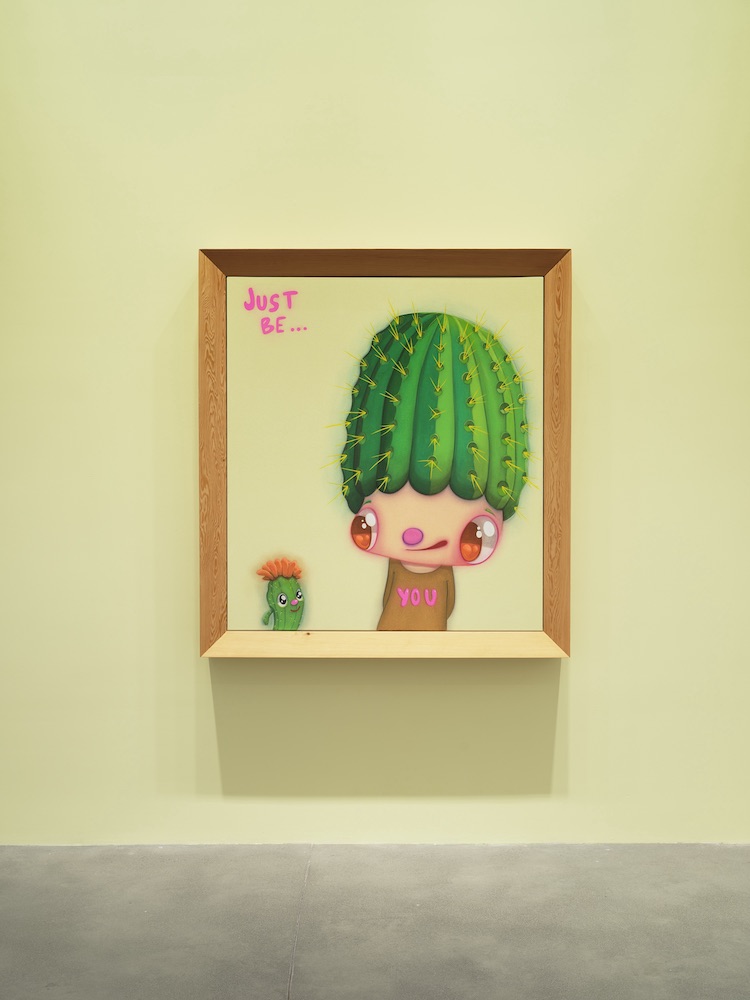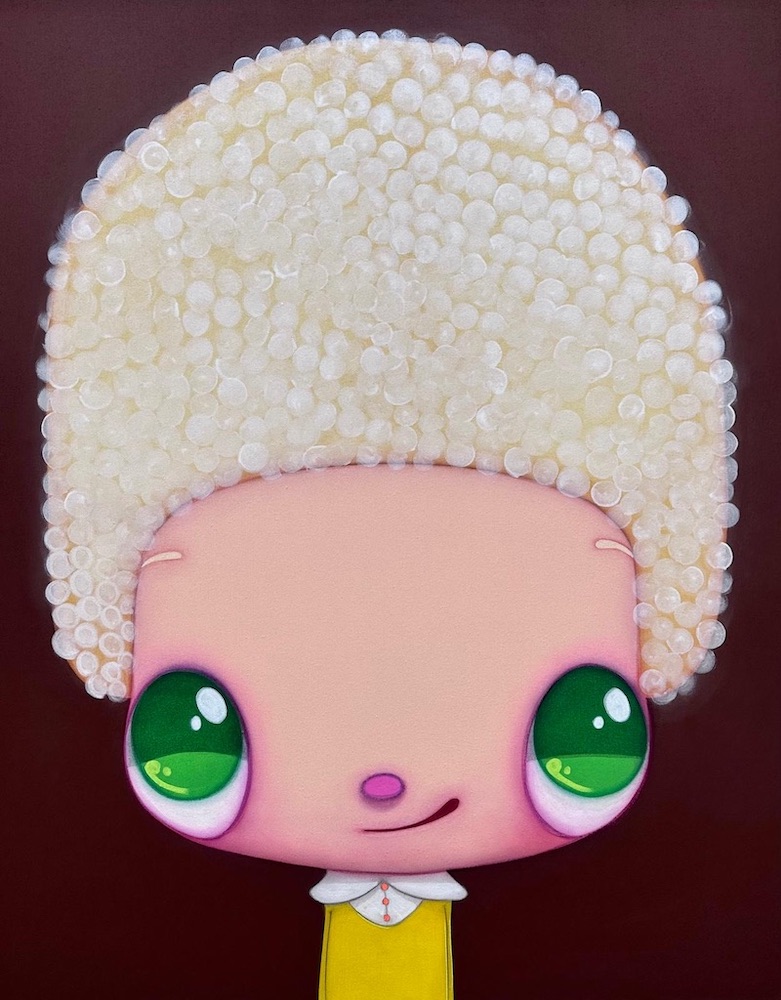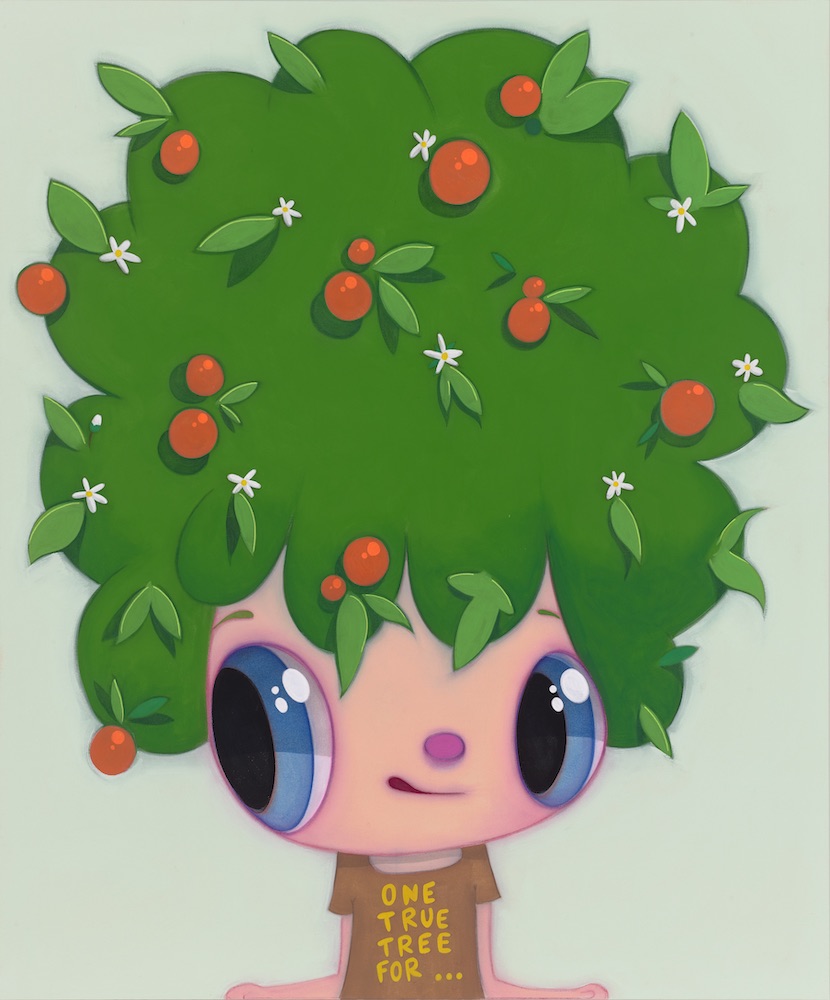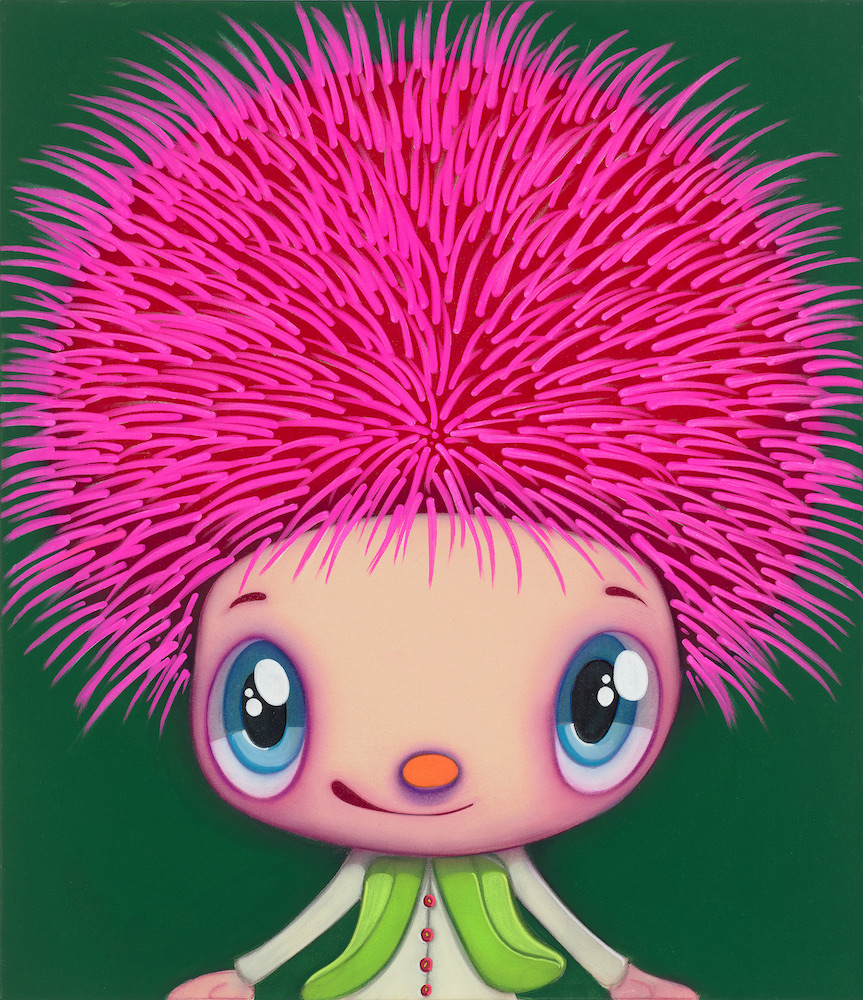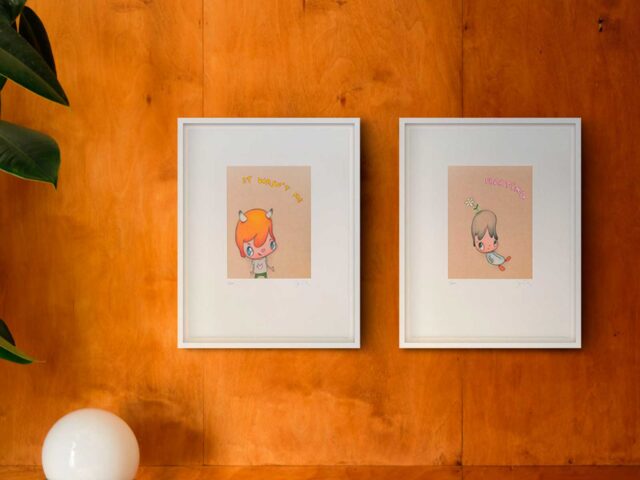Javier Calleja has been internationally acclaimed for his creative drive. Whether through painting, drawing or sculpture, Calleja’s whimsical range of figuration provides a captivating escape in this time of global uncertainty and unrest. The soon-to-open exhibition One, True, Tree, For… is the New York premiere of Calleja’s new work. The show also takes place ten years after his last New York exhibition, and complements another solo exhibition by the artist, on view at the Seoul Arts Center, Hangaram Art Museum, Seoul, until 27 October this year.
Calleja’s figures – representations of subjects that are like conceptual children of the artist himself – demand attention. The characters stand before us with an enigmatic air; their stories, seemingly frozen, are filled with chromatic hints that spill across the flat surfaces, often materialising as sculptural ravings throughout the gallery. Adorned with phrases and props, these figures exhibit bold and captivating expressions, especially emphasised in their bulging eyes and wry smiles.
Most of Calleja’s characters offer a wide variety of smiles. With an air of mirth, mystery or mischief, the smile spans the entire history of pictorial art. Smiling subjects, which at certain times rarely appeared in paintings, are epitomised by the Mona Lisa and her ambiguous, tightly sealed-lipped smile. Although Leonardo da Vinci’s Mona Lisa is not directly related to Calleja’s style, the Italian masterpiece and the Spanish artist’s multi-media production share a common thread: both establish an amusing relationship between the inanimate piece of art and the active, involved viewer.
Sources of inspiration from art history are known to be numerous in Calleja’s production, but the artist himself often insists that there are too many references to list. He prefers to emphasise visual simplicities that hide complexities of practice and content. These inspirations span time and geography, from the Superflat movement to the surrealism of René Magritte, via American icons such as Mark Rothko, Philip Guston and Andy Warhol. It is an art that is full of visual pleasure.
One need only consider Andy Warhol’s Thirty Are Better than One – the large 1963 composition that repeats the figure of the Mona Lisa – and compare it to Calleja’s complex works. Multiplicity, repetition, scale and the use of popular culture become a kind of visual appropriation. In both cases, the vital philosophy of ‘more is more’ is wielded.
Associated with the aesthetics of pop art, Calleja’s work also draws on the visual language of vintage comics. Although one might initially refer to the illustrations of R. Crumb, to Charles M. Schulz’s comic strip Snoopy, or to Daniel the Menace, an approximation to Calleja’s formative influences would lead us more to Rompetechos, the series of comic strips by the cartoonist Francisco Ibáñez. The eponymous protagonist of these stories navigates a world marked by confusion, chaos and humour, traits that both captivate and entertain the audience.
Calleja masterfully reproduces this sensibility, using concise narratives within a visual framework that transforms the gallery space into a stage for antics and suspense. His work, in the manner of a tableau vivant, integrates diverse media, such as wall coverings, sculptural elements, painting and works on paper. This multiple approach brings into play a playful distortion of scale, in which the familiar dimensions of objects are subverted, amplifying their impact and altering their perceived meaning.
The exhibition that is about to open explores the close intertwining of Calleja’s characters with nature. One of the portraits, painted on canvas, depicts a figure with blue eyes and thick blue hair, from which orange blossoms and citrus fruits sprout. The subject’s T-shirt displays a sign reading ‘One, true, tree, for…’, reflecting both a numerological play on words and the universality of the English language. The play on words suggests a structured order, both of natural origin and imposed by human systems. In a complementary portrait, the protagonist wears an orange jumpsuit adorned with the legend ‘1980’, which could signify a date or a classification structure. Daisies sprout from the figure’s green hair, whose earthy associations contrast with the connotations of the uniform, which reminds us of the imperatives of social order.
Another of Calleja’s figures displays broad green hair, stretched outwards and crowned with a cactus, while his watery blue eyes and subtle half-smile convey a sense of distraction. Although the character extends her arms towards the viewer, her gaze and smile are uncoordinated, as if eluding direct involvement. ‘Hold on, hold on, hold on, hold on, hold on’, reads the text on the figure’s clothing, and the phrase spills over the edge of the canvas as if completely contradicting what the words express. This portrait, like the others, establishes a stark dichotomy between the structured aspects of social identity and the uncontrollable elements of human experience in the natural world.
The body of work, which took over a year to develop, signals a thematic return to nature. The personification of natural elements is a practice deeply rooted in art history, dating back millennia and spanning multiple cultures, as Botticelli’s allegorical painting Spring illustrates. The green shoots, the hatching flowers and the appearance of fruit suggest the arrival of a new season, and with it, metaphorically, a new phase in the artist’s creative evolution.
Javier Calleja launches an exclusive series of silkscreen prints with Almine Rech Editions.
Sigue toda la información de HIGHXTAR desde Facebook, Twitter o Instagram
You may also like...
